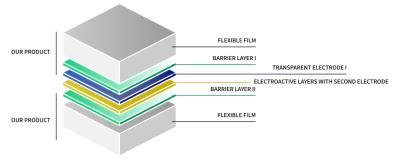Ergis updates on the status of its noDiffusion OLED encapsulation film
This is a sponsored post by Ergis Group
In 2020, Poland-based Ergis Group launched the noDiffusion film platform, a high-barrier film that offers high level of optical transmittance and low level of light scattering, and the ability to contain transparent conductive electrodes. The new technologies adopted in the production of the barrier films offer a combination of high performance and competitive pricing.

Ergis has been busy since 2020, scaling up its production capabilities, and progressing towards production in a roll-to-roll configuration (rather than the batch system it used before). Ergis is using two different technologies - ALD and sputtering to deposit the barrier and the conductive electrodes.









